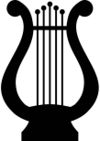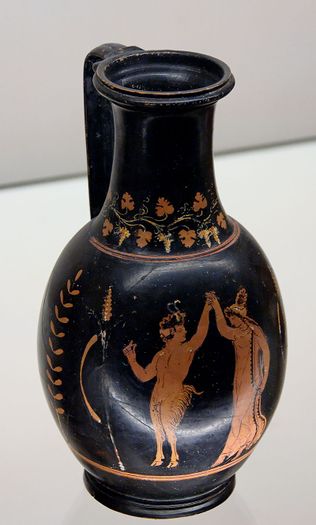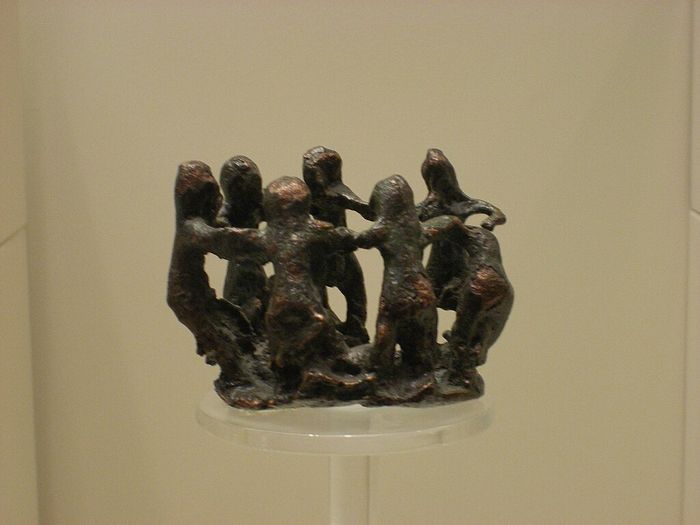Dance in Ancient Greece
Ancient Greek dances
In Ancient Greece, dance was a form of ritual, as well as a pastime.[1] Dance could be included in hunting communities, initiation ceremony rituals of age, marriage, and death, entertainment, dance festivals, and religious activity.[2] It was also viewed as a way to educate children about social norms and morals, and was viewed as being essential for physical and emotional development.[3] Dance was used in regard to war as a form of military training, as well as a ritual that served as a mediator between the gods and humans.[4][5] What modern times may consider a parade, military drill, funeral, or children’s game were seen as forms of dance as long as they were meant to be an exhibition of a rhythmic performance.[6] The Suda [Note 1] mention an ancient Greek dance which was called Dipodia (Διποδία), meaning two-step/two-footer.[7]
Examples include:
- Ancient Greeks dancing
References
- ↑ Fitton, J.W. “Greek Dance”. The Classical Quarterly, vol. 23, no. 2, 1973, pp. 254.
- ↑ Fitton, J.W. “Greek Dance”. The Classical Quarterly, vol. 23, no. 2, 1973, pp. 254-255.
- ↑ Lawler, Lillian Brady. “The Dance in Ancient Greece”. The Classical Journal, vol. 42, no. 6, 1947, pp. 344-346.
- ↑ Lawler, Lillian Brady. “The Dance in Ancient Greece”. The Classical Journal, vol. 42, no. 6, 1947, pp. 344.
- ↑ Vesterinen, Manna. “Communicative Aspects of Ancient Greek Dance”. ARCTOS, vol. 31, 1998, pp. 181.
- ↑ Lawler, Lillian Brady. “The Dance in Ancient Greece”. The Classical Journal, vol. 42, no. 6, 1947, pp. 345-346.
- ↑ Suda, delta, 1263
| Articles related to: Dance and/or Competitive dance |
|---|
|
|
|
Notes
- ↑ The Suda or Souda (/ˈsuːdə/; Medieval Greek: Σοῦδα, romanized: Soûda; Latin: Suidae Lexicon)[1] is a large 10th-century Byzantine encyclopedia of the ancient Mediterranean world, formerly attributed to an author called Soudas (Σούδας) or Souidas (Σουίδας). It is an encyclopedic lexicon, written in Greek, with 30,000 entries, many drawing from ancient sources that have since been lost, and often derived from medieval Christian compilers.
External links
Chat rooms • What links here • Copyright info • Contact information • Category:Root


